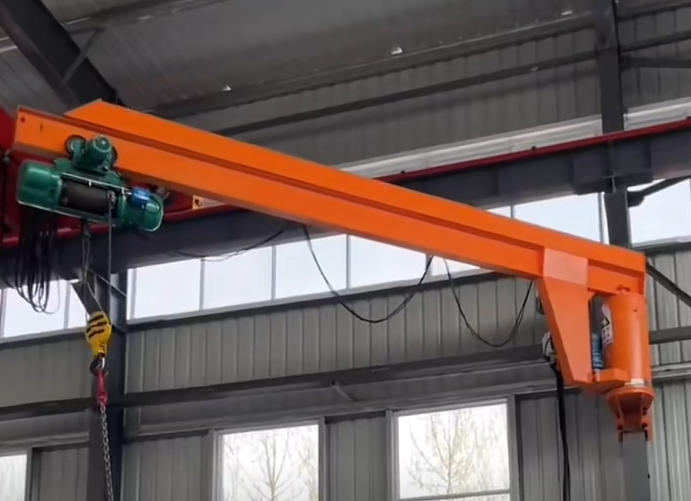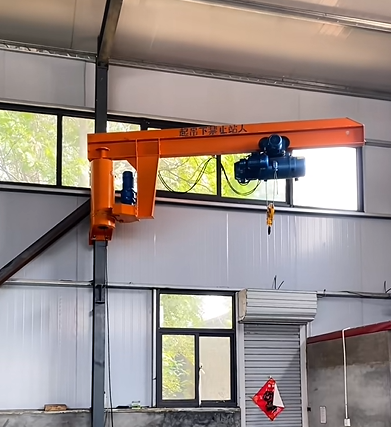Wall-Mounted Jib Crane: Working Principle and Core Components Explained
In modern workshops, warehouses, or production lines where space is limited, a highly efficient and flexible material handling equipment—the wall-mounted jib crane—plays an indispensable role. It functions like a "mechanical arm" fixed to the wall, significantly improving handling efficiency in localized areas. This article will delve into the working principle of this crane and analyze its core components.
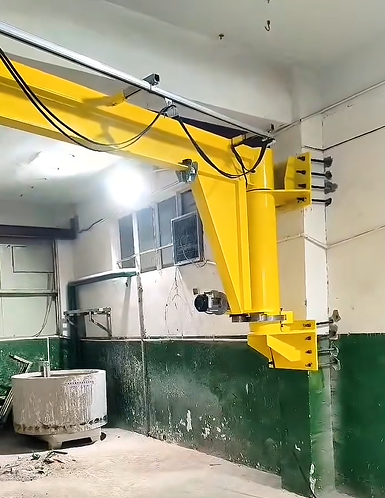
Working Principle of the Wall-Mounted Jib Crane
The working principle of the wall-mounted jib crane is based on the fundamental lever principle and rotational movement. Its core concept is to support a horizontally rotating boom from a sturdy fulcrum (the wall mount), thereby creating a working area that covers a fan-shaped sector.
The specific operational process is as follows:
Power Transmission: The operator, through manual or electric drive, causes the boom of the jib crane to rotate 180 to 270 degrees around its vertical axis.
Lifting Operation: The hoisting unit (such as an electric hoist or chain hoist) installed at the end or underneath the boom is activated. By winding or unwinding the wire rope or chain, it achieves the vertical lifting and lowering of the load.
Precise Positioning: By combining the rotation of the boom and the vertical movement of the hoist, the operator can easily lift the material and accurately transport it to any point within the (sector-shaped) work area, completing tasks such as handling, assembly, or positioning.
This design allows the wall-mounted jib crane to operate without occupying floor space, making it particularly suitable for workstations arranged along walls and an ideal solution for optimizing space utilization.
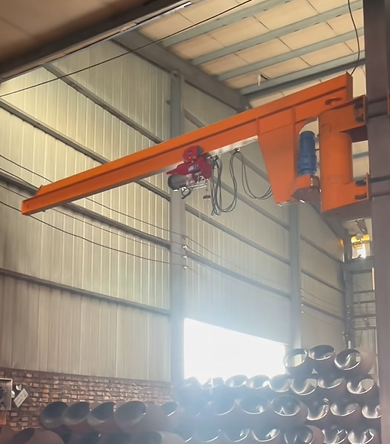
Analysis of Core Components
A complete wall-mounted jib crane is primarily composed of the following key parts. Understanding these components is vital for selecting the right jib crane for any application:
Wall Mounting Bracket
This is the foundation of the entire crane. It is securely attached to a load-bearing wall, ensuring the stability and safety of the wall-mounted jib crane.Jib Arm (Swing Boom)
The jib arm is the core component of the jib crane. Its length determines the working radius of the crane.Slewing Mechanism
The slewing mechanism is the key component that enables the rotation of the jib crane. The quality of this mechanism directly affects the service life of the wall-mounted jib crane.Hoisting Unit
The hoisting unit is the component that directly performs the lifting task on the crane. It is a critical part of any jib crane system.Electrical Control System (For Electric Types)
For electric crane types, the control system is its "brain," enabling safe operation of the wall-mounted jib crane.
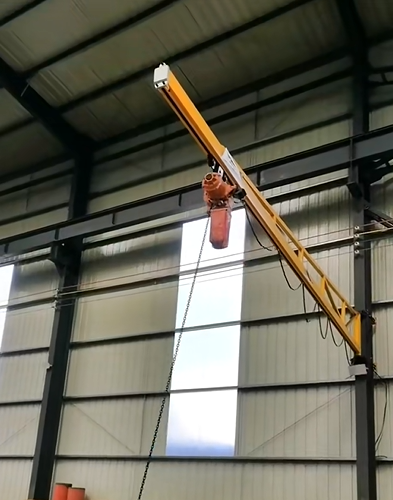
Conclusion
In summary, the wall-mounted jib crane successfully solves material handling challenges in specific scenarios. This type of jib crane demonstrates exceptional adaptability. Understanding its working principle and components is essential for the safe operation and proper maintenance of this important crane equipment. Selecting the right jib crane, such as a robust wall-mounted jib crane, is a critical decision for optimizing workflow.
